I collect sand as a hobby and for science. One of the things I love doing is going on a sand safari, a trip especially to collect sand. These trips helped my development as a scientist and they are fun. I haven’t been on a sand safari in a long time and I started realizing it’s time. I want your opinion whether this would be fun to do with a group as science-outreach activity—like a hands-on version of a “star talk”—and is it something you might want to participate in? First, let me explain a bit more…
Most sand safaris have been opportunistic. When I traveled somewhere for work, I took a day of vacation at the destination and paid the extra travel costs so I could collect sand. I’ve done this in New Zealand (north of Aukland), Australia (Queensland), Canada (Toronto to Sudbury), Maine (Southern and Midcoast up to the North Woods), and California (Marin County to Big Sur). I’ve also driven much of Florida for sand, but Florida is a long state and I haven’t been to some of the extremities. Mainly, these trips are an excuse to enjoy nature. It pushes me to go farther, to hike, to swim, to climb, and to enjoy its beauty. In California I was climbing down cliffs to get to the beaches, or hiking miles through forests with waterfalls. It’s hard to have better days than that. One of the best trips was renting a mountain bike in San Francisco, riding across the Golden Gate Bridge into the headland of Marin County and then out to the beaches. Another trip I will never forget ended far north of Brisbane, Australia, close to midnight. I was on a deserted beach with no Moon in the sky. It was so dark that I truly couldn’t see my hand in front of my face. That trip gave me the best view of the Milky Way I have ever had. The prior night I had sat on a beach south of Brisbane and looked across the ocean, thinking of sailing ships crossing the seas from England. Great memories. There are also trips where you have to swim to a sandbar or wade across rivers or hike waste-deep to the end of a sand spit where river and ocean meet, just to get to the special sample. Kayaking to small islands in Maine has also been fun. It’s as much about the adventure of getting to the sample as it is about having it in the collection.
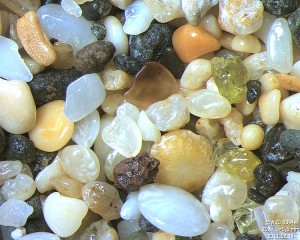
Sand from Kalalau Beach in Hawaii. Image credit: Psammophile via Wikimedia
I was once asked by a reporter in Italy to give him my thoughts on sand collecting because people were stealing sand from historic and sensitive beaches. I agree that special beaches should be protected against collecting, but I also pointed out that more sand is carried away in beach towels and hair every year than by all the sand collectors. (I did the math to show that.) Even if every human in the world collected sand from Florida, the effect on the peninsula would be unmeasurable. Sand from the ocean bottom is brought to the beaches and vice versa by waves and currents, so you would have to remove enough sand to lower the ocean floor to make a difference. But that doesn’t excuse irresponsible collecting. Responsible collecting helps kids develop an appreciation for the outdoors and a love for geology but also the desire to protect nature. Sand collecting can also be helpful for science. As a scientist I am trying to preserve a record of the world’s sand before Homo destructus (mankind) changes everything. Some beaches no longer have their natural sand, because man-made jetties disrupted the beach currents so they eroded the sand away, then local communities hauled in sand from elsewhere to replace it. I am thinking of some citizen science ideas that we might want to discuss later to collect and document the world’s sand. (I have a different idea to discuss today.)
On some sand safaris I’ve focused on the adventure of getting there, but on others I’ve focused on science, studying the geology of the location before the trip and then trying to identify as much of it as I can while there. I have also done experiments with sand while on the trip: playing in rivers or on beaches to see how water sorts minerals and grain sizes. When the samples come home, they go under the microscope for a full description recorded on each sample’s index card. Sometimes under the microscope you find a microfossil or a beautiful mineral grain that looks like a tiny gemstone. It’s like entering a magical world, looking at sand in the microscope. You have no idea until you get a really cool sample and see for yourself. I was astounded when I discovered bryozoans that looked like miniature volcanoes with gemstones all over their slopes in the Cape Canaveral sand. About 1 out of 1000 grains was a bryozoan and I was so enrapt that I collected them with tweezers for hours. (I have had trouble finding them in later samples.)
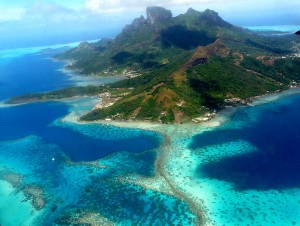
Bora-Bora island and its lagoon. Image credit: Samuel Etienne, CC BY-SA 3.0
I have a friend Christopher Maslon who goes on more exotic sand safaris than I do. He buys airline tickets to islands around the Pacific just to collect sand, and we trade samples by mail. Apparently he swims down and collects from deep in the water, as well. (I often collect underwater but never deeper than about 6 feet. My samples labeled DLE are dans l’eau.) If I had more funds and time, I would love to travel the world just for sand collecting, and maybe I will someday. As I said before, sand collecting is an excuse to go to new places and to push my limits.
So I started feeling the need for another sand safari, lately. I have been to all the places in Florida near enough to drive there and back in one day. Staying overnight on longer trips is a barrier to going, but I got this idea: I love talking about science and showing people how cool it is, so what if I hosted some sand safaris for other people to come along, and then I could go to those same nearby locations again without losing the excitement? We could meet up at a beach somewhere, bring our own lunches, and do some introductory science. Instead of giving a “star talk”, it would be a “sand talk”, and in fact an entire afternoon of hiking, swimming perhaps, collecting, looking in microscopes, and starting your own collections. I think this could grow into a fun series of events.
I thought maybe I would do just one for starters to see how it goes, to see if the idea works and if people have fun and learn from it. I give talks like this in elementary schools and the students always say it’s tons of fun, but would adults have fun with it, too? So what do you think…is there anybody close enough in Florida who would like to do an easy sand safari? (I wouldn’t recommend traveling far to get here until we find out whether it is actually fun or not. This event won’t rival a NASA tweetup for excitement, for example!) There won’t be any climbing cliffs or seeing waterfalls in Florida, and the geology is rather basic here, but it’s a lot of fun in my opinion, especially if you like the beach. I would tie in as much about space as I could: how sand moves on Earth compared to what we see on other planets and Moons; how we are building technology to work with sand on other bodies in space; the special challenges of working with granular materials; how crabs and lizards and other creatures adapted to sand are inspiring our robotics for space; etc.
Even if you know you couldn’t make it here, could you still let me know whether you think the idea is a good one and offer any suggestions you may have? What topics should we discuss there on the beach (or in a pavilion next to the beach)? What activities would be best? How long should it last? Should the sand safari be limited to some number of people? How far would people want to travel to do this? Should we include some hiking on the beach or driving to multiple beaches in one afternoon? Any other ideas?
So please let me know what you think. Based on the response I will decide if I should schedule the first trial event. Thank you!

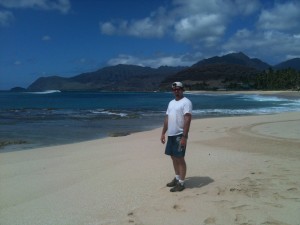
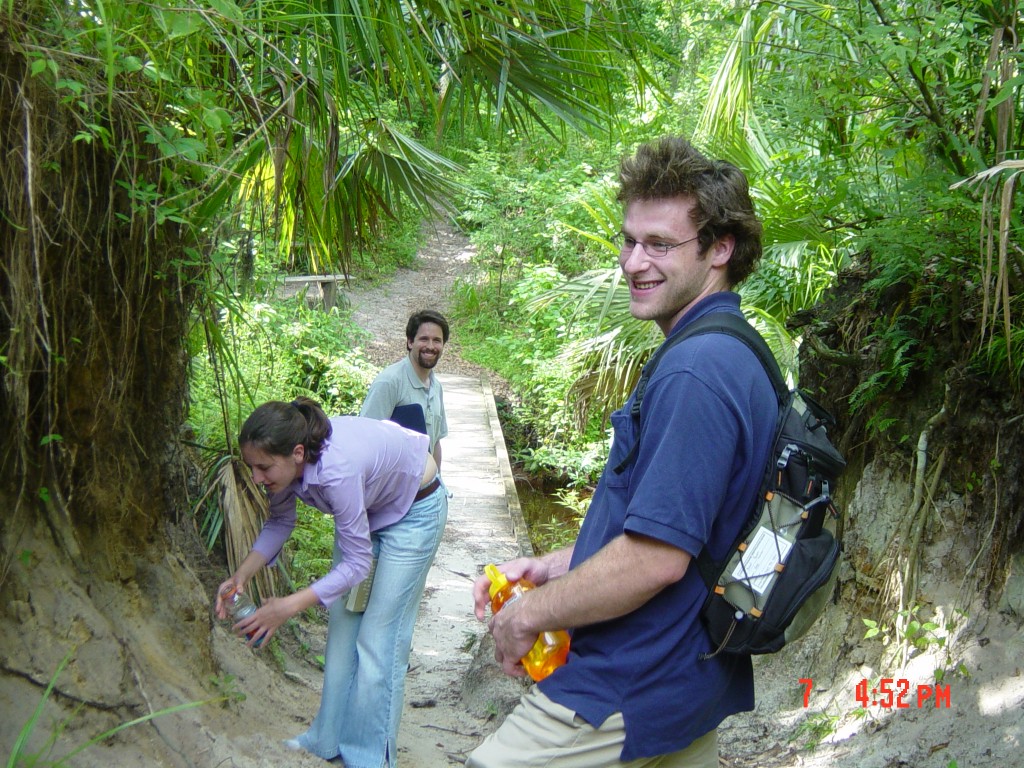
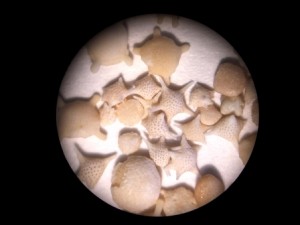
I live in Missouri and I would find that fascinating! It is interesting to note that oceans aren’t the only places you find sand, many rivers and streams have sand too. That means this idea could work almost anywhere. Nth at being said, I will be in Florida in July, if you want to teach me about sand!
I live in Tallahassee and would love to know more about the geology. There are many beaches and marshes, lots to explore. My biggest personal worry is that I am asthmatic, and whenever I go out with a group, I don’t want to be the one that “holds the pace down.” Is fitness level a limiter?
Sounds fun, but unfortunately I live too far away.
I think plenty of people would enjoy it, but most would not be able to predict they would enjoy it. They need a little education about what sand means before they decide whether to go on safari, unless they’re interested in the water or the trip itself.
It’s not exactly close, but add Puerto Rico to your list. The northern coast is covered with sand made of enormous amounts of flotsam. For the top few inches of surf-sorted sand, where the gross particles are, you can expect at least half of them to be old human-made glass shards that are eroded down to smooth pebbles. Lots of bright greens, browns, and smoky semi-transparents. Google Image-search “puerto rico sea glass”. There’s your antropogenic sand.
I love this idea! I don’t live in Florida currently but have family there, so the trip would definitely be worthwhile to me. I’ve asked my daughter (15), and she thinks it sounds like fun too. Keep us posted!
yes, please.
Sounds like a great day out. My son and I would love to come along. We’ll be visiting beaches in MD and NJ this summer. If you want us to bring any samples back let me know.
Very exciting!
Thanks everybody for the feedback so far!
Jeannette — I think I would structure it in a way that most of the activities require no hiking, but I would hold the event at a beach where there are some excellent hikes for those who want to do so.
Chad, thanks for the tip. I actually do have some sand from Puerto Rica. Some friends from our kids’ school are from Puerto Rico have brought some back for me, but I don’t have the sea glass you’re describing. It sounds very cool!
whittamore — thanks for the offer! I never turn down sand 🙂 but please don’t go out of the way for me. The most fun I have with sand collecting is going out in nature to collect it, so I’ve tried to scale back the sample trading that I used to do. But as I said, I never turn it down!
Cool idea. I think a limited number of people is a good idea for the first outing, though that may happen naturally with the first outing anyway.
I would love to do this with my kids when they are old enough to appreciate it, which would be several years from now. I might suggest having a microscope along and possibly also samples from around the world for comparison.
well I don’t know if I qualify since I a) interned with you and b) have an advanced degree in geology/space science, but I’m always up for new adventures and opportunities to learn! so yes, I would be interested. Plus it’s a good excuse to travel to FL.
Phil, if I lived somewhere close to your place, I would certainly want to participate. The idea of travelling around the globe to collect and analyse sand, enjoying being out in the nature AND learning new things, sounds great, too.
It sounds like a simple and interesting way to study the area you might be in. I have been fascinated to see how the prevalence of quartz in sand increases as we go north along the Florida gulf coast. By the time we get to Fort Pickens it is essentially all quartz. It squeaks when you walk on it, and it settles almost instantly despite large wave action.
I took a course in automated image analysis some years ago and classifying sand grains was a nice example of the power of imaging methods.
This would make a great roadside geology book.
I started a sand collection thanks to Phil (I am the girl in the purple shirt in his picture), and now I have sand from all over the world (Japan, Mongolia, Switzerland, Alaska). But I am not as organized as Phil is. When I go somewhere, I forget to bring a bag and a pen. Now I continually find sand stuck into plastic grocery bags and old water bottles, and I have no clue where they came from! Be prepared, Sand Collectors!
Obviously, I think it is a good idea, or else I wouldn’t have sandy surprises everywhere.